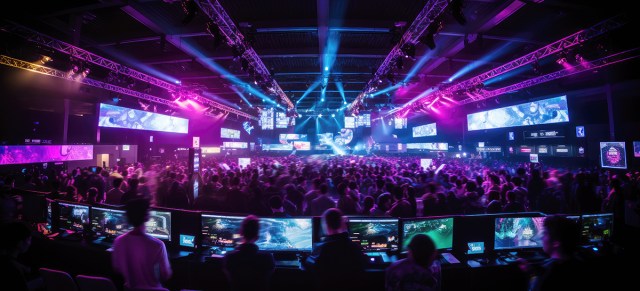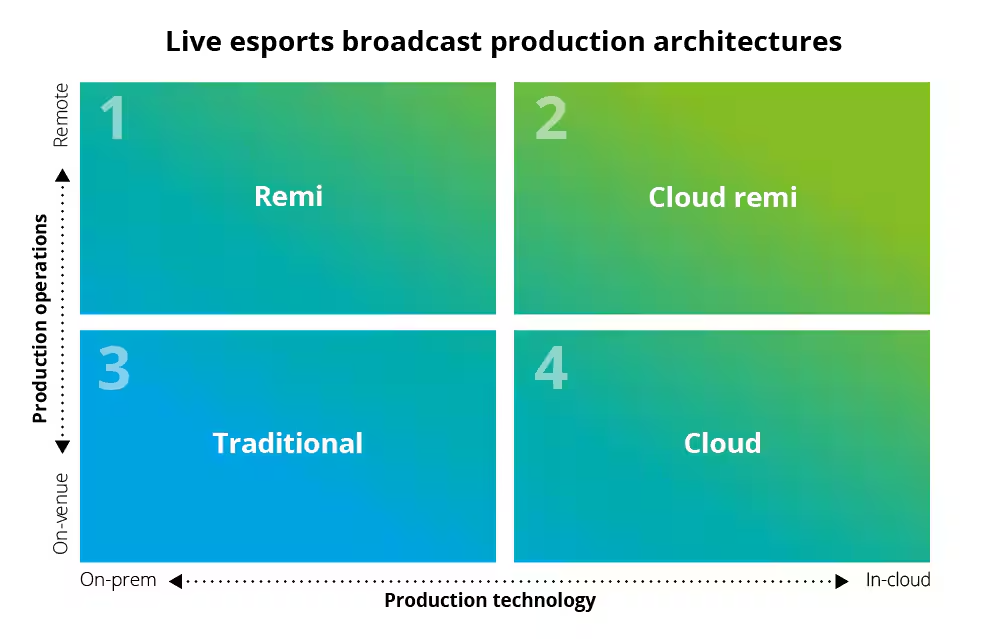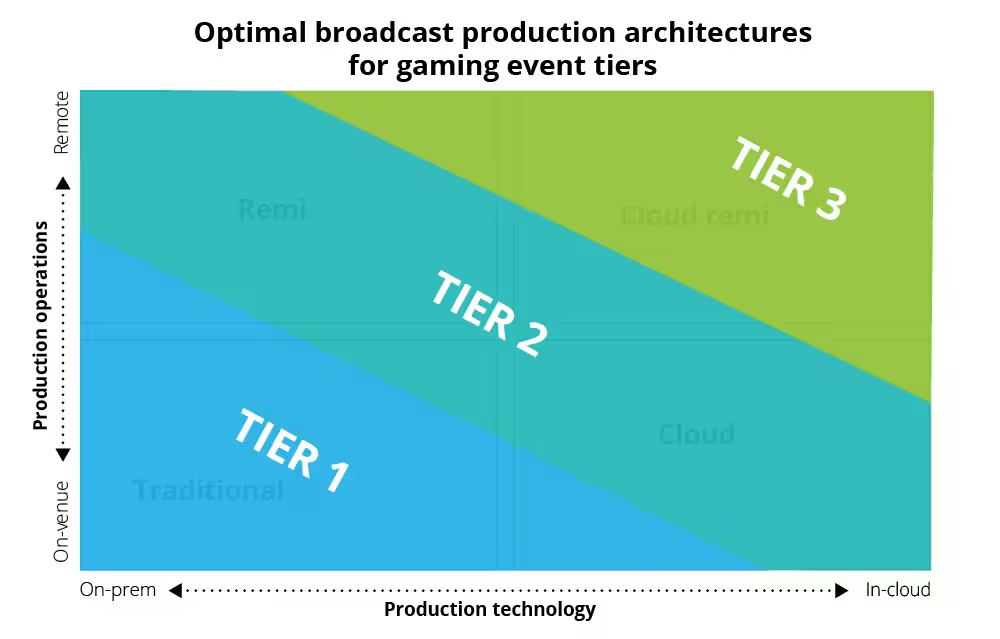
TL;DR
- With the estimated eSports audience expected to grow from 532 million in 2022 to 640 million in 2025, broadcasters should aim to build out cloud and remote production infrastructure, Deloitte advises in a new report.
- Deloitte suggests that as technology advances it could become more economical and less risky for broadcasters to adopt cloud and REMI production models. The differentiators between event tiers will likely also begin to blur, the consultancy predicts.
- Trying to adopt a traditional sports production approach may present challenges such as large capital investment requirements, non-scalable infrastructure, and the inability to properly localize content to meet the demands of an international audience.
READ MORE: Esports broadcast production optimization (Deloitte)
With the estimated eSports audience expected to grow from 532 million in 2022 to 640 million in 2025, broadcasters should aim to build out cloud and remote production infrastructure, consultants at Deloitte advise.
Any broadcaster intent on forcing a traditional sports broadcast model onto an eSports one will get into difficulty, Deloitte states in its analysis, “Esports broadcast production optimization.”
For instance, given the scope of games played in multiple locations around the world it would be economically unfeasible to build out permanent studio facilities in each place. Physical infrastructure built by broadcasters in the traditional model may be fine for the largest events, but is then left underutilized for most of the year. In addition, with eSports spanning territories and languages, the challenge is to make the event localized to the consumer.

All of this points to a future of cloud and remote production which offer advantages in being able to scale up capacity and facilities on demand as well as cutting down on the (financial/carbon) cost of travel.
The right production architecture will of course vary from broadcaster to broadcaster and depend on the types and size of its events. Deloitte classifies events into three tiers with tier 1 for the largest all-around events. It suggests such productions take a risk-averse approach, and therefore very little remote (REMI) and cloud models are coming into play.
By contrast a tier 3 production may take more risk in Deloitte’s view “because failure has less financial impact.”
As technology advances, it could become more economical and less risky for broadcasters to adopt cloud and REMI production models, the consultancy caveats. The differentiators between the event tiers will likely also begin to blur.

This may be old news to the likes of leading eSports producer and broadcaster Riot Games, leading the way with complete cloud-based live production since 2022.
Working with AWS, Riot Games has established remote broadcast centers in Dublin and Seattle to support live eSports broadcast production and operations for all of Riot’s regional and global live eSports events.
READ MORE: Riot Games prepares to close its last data center as it completes global migration to AWS (AWS)
READ MORE: Improving the Esports Experience with Remote Broadcast Centers Powered by AWS (Riot Games)

Why subscribe to The Angle?
Exclusive Insights: Get editorial roundups of the cutting-edge content that matters most.
Behind-the-Scenes Access: Peek behind the curtain with in-depth Q&As featuring industry experts and thought leaders.
Unparalleled Access: NAB Amplify is your digital hub for technology, trends, and insights unavailable anywhere else.
Join a community of professionals who are as passionate about the future of film, television, and digital storytelling as you are. Subscribe to The Angle today!


